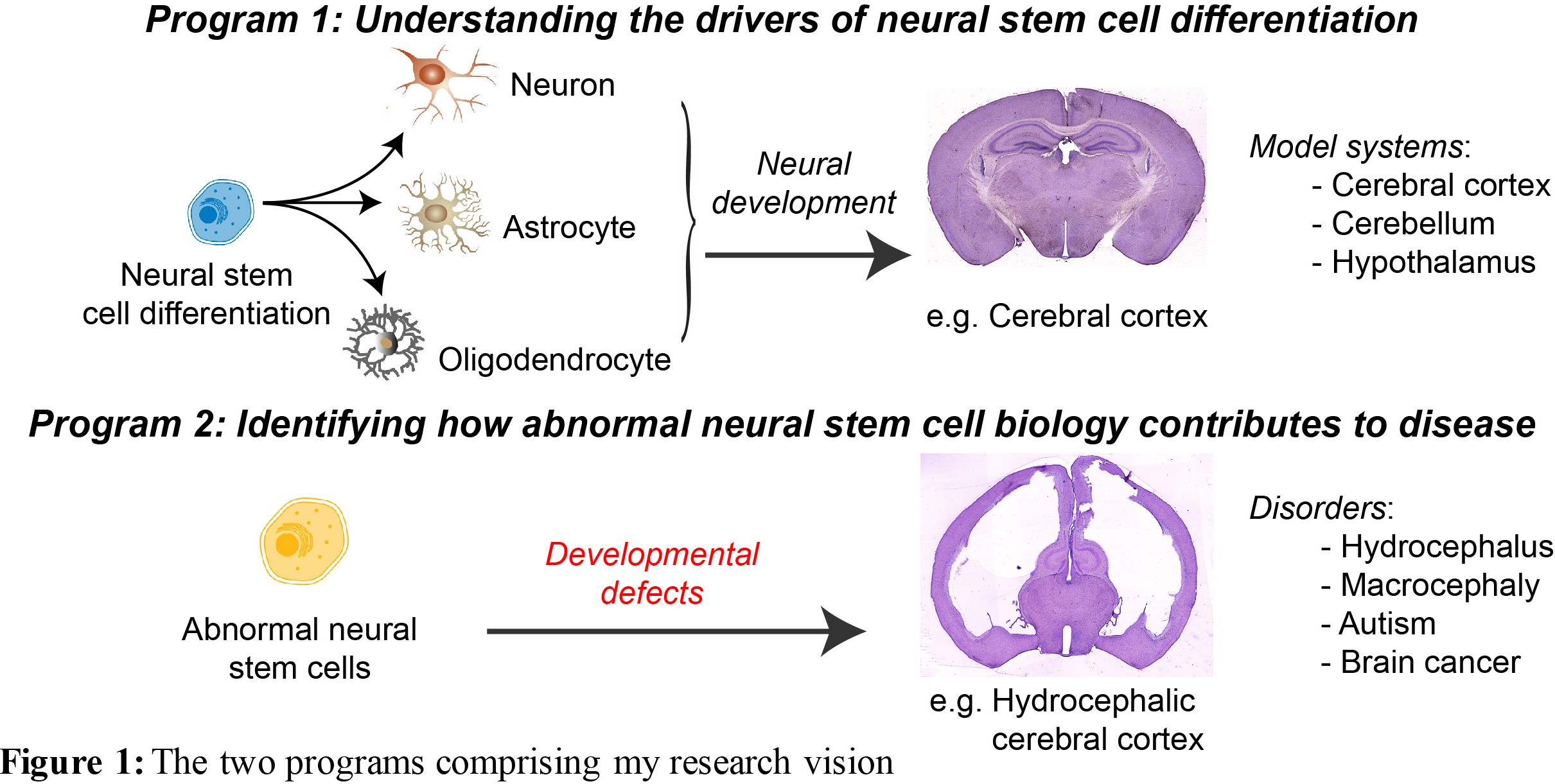Piper Lab - About
Research directions
The human brain is an incredibly complex organ, consisting of over 100 billion neurons, and even more glial cells. Further adding to this complexity is the fact that there are a wide variety of distinct neuronal subpopulations within the brain, each with different morphological characteristics, neurochemical properties and patterns of connectivity. Amazingly, nearly all of the cells within the brain are derived from a relatively small population of neural stem cells (NSCs) that proliferate, then differentiate, during embryogenesis. Understanding how NSC biology is coordinated, both spatially and temporally, to generate the mature brain remains one of the great challenges in biology. My vision is to reveal the mechanisms that control NSC differentiation within the developing brain, and to apply this knowledge to understand disease processes caused by abnormal NSC differentiation (Figure 1).

I have made a number of significant contributions to understanding how NSC differentiation is coordinated during neural development since starting my own group in late 2010. This work, which was supported by competitive fellowship (NHMRC Career Development Fellowship 2009-2012; ARC Future Fellowship 2013-2017) and grant funding (three NHMRC project grants as CIA; two ARC Discovery Projects as sole CI), has helped to elucidate the fundamental mechanisms underpinning neurogenesis within the neocortex, hippocampus and cerebellum. I have also defined critical molecular controllers of NSC quiescence, a cellular state that ensures the longevity of adult NSCs, as well as describing the behavioural consequences of aberrant adult neurogenesis. Finally, I have provided new insights into how abnormal stem cell biology can contribute to a range of neurodevelopmental disorders, as well as cancers of the brain and skin. The significance of my findings has been recognised by multiple awards for research excellence, from both national (e.g. 2018 Emerging Leader Award, Australian and New Zealand Society for Cell and Developmental Biology; 2010 AW Campbell Award, Australasian Neuroscience Society) and international agencies (2015 Innovator Award, Hydrocephalus Association; 2010 CJ Herrick Award, American Association for Anatomists). I now am in an ideal position to address aspects of two key questions in the field, namely, what are the transcriptomic and epigenomic factors that control the differentiation of NSCs during brain development, and how do deficits in this process contribute to disease?
